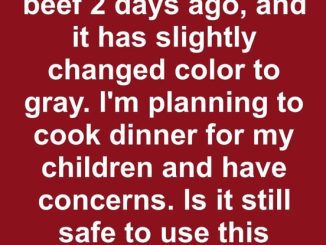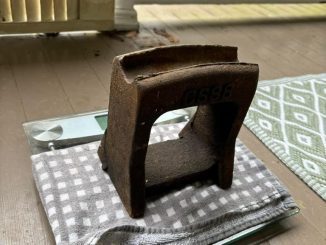Flying comes with its quirks—tiny seats, strange snacks, and long waits—but what about the beverages served onboard? A former flight attendant, Kat Kamalani, recently set social media abuzz by revealing the “disgusting” truth about certain drinks you should avoid while flying. If you’ve ever wondered what’s really going into that in-flight coffee or tea, you’re not alone.
Why You Should Think Twice About In-Flight Beverages

Kat Kamalani didn’t hold back in her viral Instagram video, urging passengers to avoid consuming liquids not served from a sealed bottle or can. According to her, the reason boils down to one major issue: dirty water tanks.
“The water tanks are never cleaned, and they are disgusting,” Kat claimed. The hot water used for tea and coffee is drawn from these tanks, which, she says, are rarely sanitized. This revelation raises concerns for anyone who relies on in-flight beverages to stay refreshed during a journey.
Are Coffee and Tea Really Unsafe to Drink on Planes?
Kat’s warning about in-flight coffee and tea sparked heated debate among airline professionals and frequent flyers. According to her, even flight attendants themselves avoid these drinks due to their knowledge of how infrequently the machines are cleaned. She also advised parents to steer clear of asking for hot water to mix with baby formula, citing the same concerns.
However, her claims have been met with pushback from other flight attendants and aviation experts. While some corroborate her warning, others assure passengers that the water tanks are regularly maintained and the drinks are perfectly safe.
Contrasting Opinions from Industry Experts
The debate over airplane water safety is nothing new. While Kat’s claims raise eyebrows, aviation experts and seasoned flight attendants offer a more balanced perspective.
- Frequent Maintenance:
According to Vance Hilderman, chief technical officer of AFuzion, the water onboard planes is treated with a chemical rinse to ensure it’s safe. He compared the cleaning process to the HEPA filtration systems used for cabin air, stating that bacteria are unlikely to survive the sanitization process. - Long-Time Flight Attendants’ Take:
Several veteran flight attendants have chimed in, claiming they’ve consumed in-flight coffee and tea for years without any issues. They argue that if the water were truly unsafe, flight crew members—who rely on it daily—would frequently fall ill, which is not the case.
What About the Machines That Brew Your Drinks?
Even if the water itself is safe, the equipment used to brew coffee and tea could pose another problem. Kat mentioned that these machines are rarely cleaned unless they break. Over time, this could lead to a buildup of residue and bacteria, making the final beverage less than appetizing.

While this claim isn’t universally accepted, it’s enough to give travelers pause, especially when alternatives like bottled water or canned drinks are available.
Pro Tips for Staying Safe and Comfortable
If you’re concerned about in-flight beverage safety, there are simple steps you can take to protect yourself without sacrificing comfort:
- Stick to Sealed Drinks: Request water, soda, or juice served from a sealed can or bottle to avoid potential issues with onboard water.
- BYO Beverage: If you’re a coffee or tea enthusiast, consider bringing your own travel mug and filling it with a beverage purchased at the airport before boarding.
- Stay Hydrated with Bottled Water: Airplane cabins are notoriously dry, so staying hydrated is key. Choose bottled water for peace of mind.
Is the Concern Overblown?
While Kat’s claims have generated significant buzz, it’s important to consider the broader context. Aviation regulations require airlines to follow strict sanitation protocols for onboard water systems. Even so, the specifics of how often tanks and machines are cleaned can vary between airlines.
For the average passenger, the risk of getting sick from in-flight coffee or tea is likely low. However, for those with weakened immune systems or heightened sensitivities, opting for sealed drinks may be a safer choice.
The Bigger Picture: Air Travel Hygiene
Kat’s video highlights a broader issue: the importance of hygiene during air travel. From tray tables to armrests, planes are full of surfaces that require regular cleaning. While airlines have stepped up their sanitation efforts in recent years, passengers should remain vigilant.
How to Travel Smarter and Safer

- Bring Sanitizing Wipes: Clean your personal space, including tray tables and armrests, as soon as you board.
- Pack Snacks and Drinks: Avoid relying solely on in-flight offerings by bringing your own snacks and beverages.
- Wash Your Hands: Use soap and water or hand sanitizer frequently, especially before eating or drinking.
Conclusion: To Sip or Not to Sip?
The debate over in-flight coffee and tea safety boils down to individual preference and tolerance for risk. While some argue that the water is perfectly safe, others, like Kat Kamalani, prefer to err on the side of caution. Whether you choose to skip these drinks or not, being informed about the potential risks allows you to make the best decision for your health.
Ultimately, staying hydrated and comfortable during your flight doesn’t have to be complicated. With a little preparation and some savvy choices, you can navigate the skies with confidence—beverage in hand or not. Safe travels!


